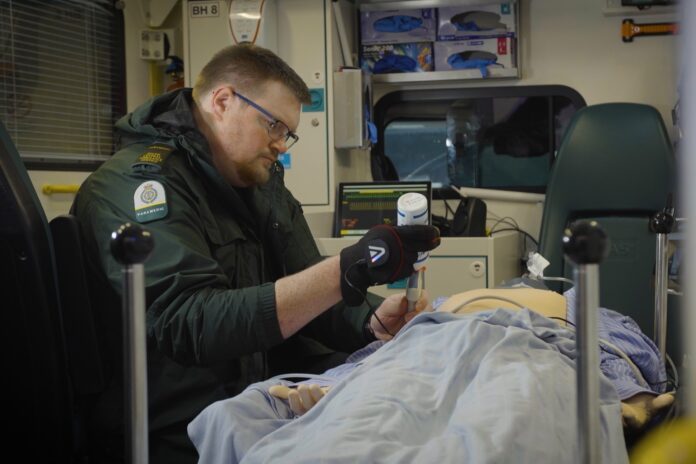BT has demonstrated the use of virtual and augmented reality (VR/AR) over 5G to allow clinicians to remotely assess and diagnose a patient, and view medical records.
The showcase took place with University Hospitals Birmingham NHS Foundation Trust (UHB), following the launch of BT’s 5G network in Birmingham earlier this year.
It also follows the UK’s first demonstration of a remote-controlled ultrasound scan over the 5G network in June.
The presentation showed a paramedic working from an ambulance in the Edgbaston area of Birmingham, being linked over the 5G network to a clinician based over two miles away at the Medical Devices Testing and Evaluation Centre (MD-TEC) in UHB’s simulation lab.
Low latency
Wearing a specially equipped VR headset, the clinician can visualise exactly what the paramedic sees in the ambulance. Using a joystick, the clinician can remotely direct the paramedic.
They can also send control signals to a robotic or ‘haptic’ glove worn by the paramedic. The glove creates small vibrations that direct the paramedic’s hand to where the clinician wants the ultrasound sensor to be moved.
A camera in the ambulance transmits a high-definition view of the inside of the ambulance, paramedic and patient. Together with live feeds of the patient’s ultrasound scan, the clinician can recognise vital signs and view medical records in real-time via the VR headset.
Fotis Karonis, CTIO and 5G executive lead for BT Enterprise, said, “Not only is 5G capable of ultrafast speeds, it has much lower latency meaning there is little to no delay when transmitting data over the network.
“This means things happen in ‘real-time’ so this is of significant interest to the NHS because of its potential for medical applications, such as diagnostics and preventative healthcare.
“This capability provides efficiency opportunities for both hospital and ambulance trusts by reducing the number of referrals into hospital and patient trips.”
Healthcare potential
Dave Rosser, UHB Chief Executive, said: “We are excited by the huge potential of 5G technology and how it can help transform healthcare in the future. We believe it has the potential to create more efficient use of healthcare resources, particularly with regards to easing the burden on A&E services which are facing unprecedented demand.”
He added, “At present, the urgent care system is based on an antiquated model and our centres are dealing with huge numbers of patients every day. The characteristics of 5G mean it should provide many advantages, including speeding up diagnoses for patients and potentially reducing the number of ambulance and A&E department visits.
“In particular, being able to perform diagnoses remotely means a doctor or clinician could determine an appropriate care pathway without necessarily having to see someone in hospital.”



